Hi I wrote this post in English and Slovak language.
The ruins of old castles stand as silent witnesses to the ever-changing landscape. From their heights, they gaze into the valleys and observe the progress humanity has made. Today, however, we will travel back in time, to an era when the castle of Veľký Kamenec was bustling with activity. When guards patrolled the walls, diligently inspecting everyone who passed through the main gate.
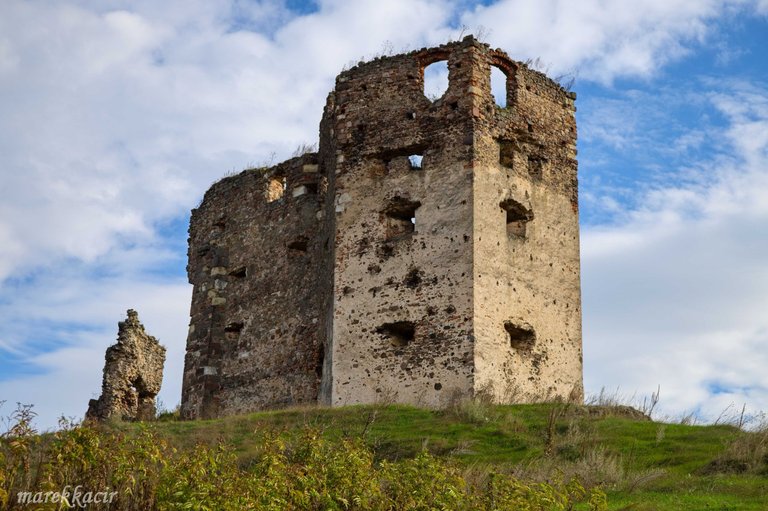
The castle of Veľký Kamenec was one of our destinations during our trip through the Tokaj wine region. We parked our car below the castle and walked up a gentle slope along a well-trodden path around the manor. Just beyond it lies the remains of what was once a significant castle.
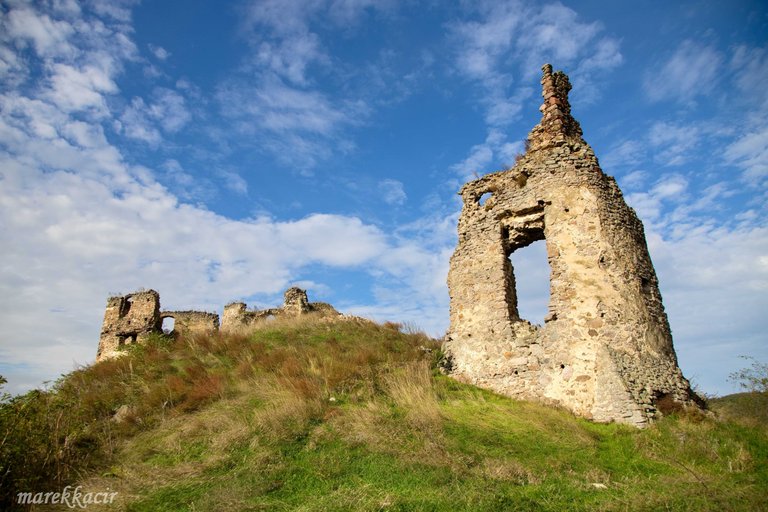
The castle of Veľký Kamenec was built in the 13th century after the Mongol invasion of what is now Slovakia. The castle did not escape conflict either. In 1451, it was seized by the army of commander Ján Jiskra of Brandýs, who was summoned by the royal widow Elizabeth to help secure the Hungarian crown for her son Ladislaus the Posthumous after the death of Albert II of Habsburg. From the castle, Ján Jiskra and his Hussites launched raids into nearby and more distant areas.
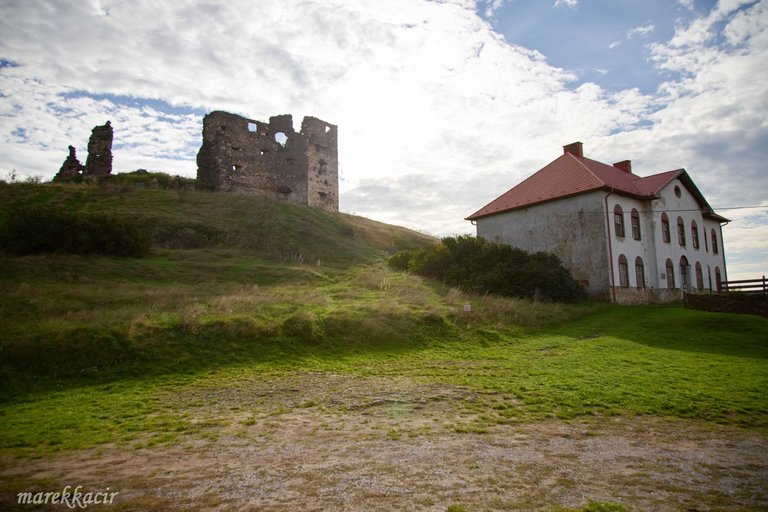
The Hungarian throne was also contested by Polish King Władysław III Jagiello. He was supported by the prominent commander John Hunyadi. These two commanders waged battles on Hungarian territory, using castles as strategic strongholds from which they controlled the surrounding areas.
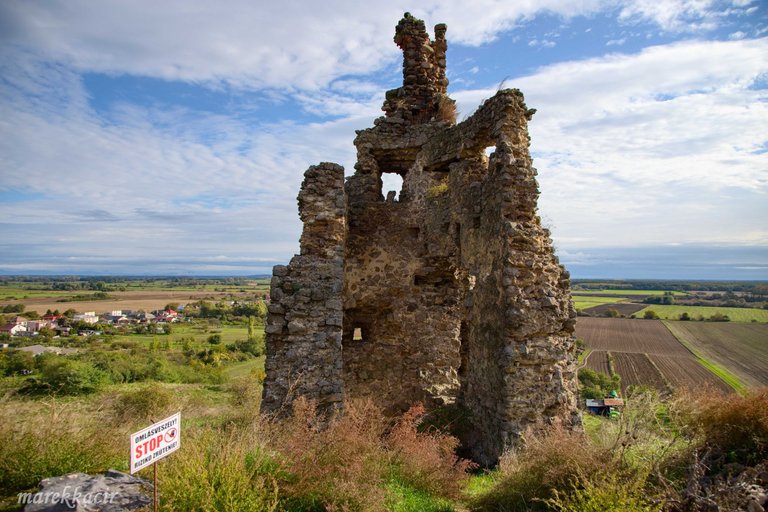
The castle of Veľký Kamenec was a crucial strategic point, located on a trade route and serving as a gateway from the southern plains to the mountainous northern Hungary. It was here that Ján Jiskra signed a peace agreement with John Hunyadi, ending the conflicts between them.
In 1453, Ladislaus the Posthumous was crowned king, but Hussite troops remained stationed in castles occupied by Ján Jiskra for several more years, including at Veľký Kamenec. It wasn’t until 1458 that the castle was seized by the royal army.
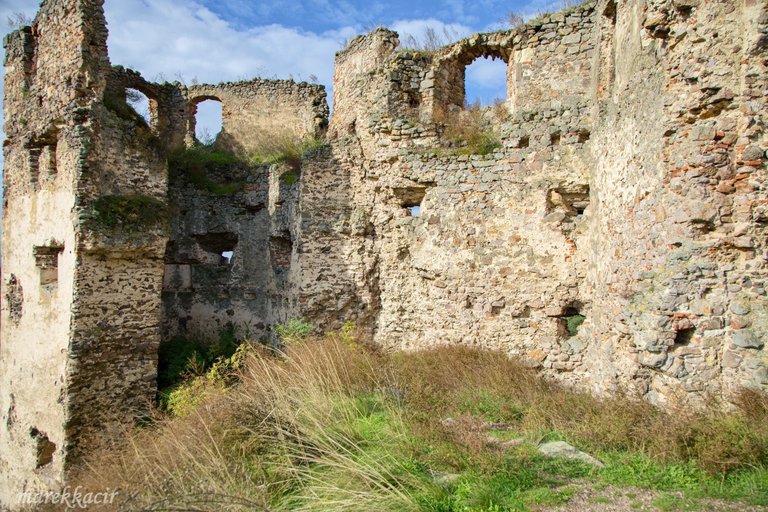
At the end of the 15th century, major repairs were carried out on the castle, likely due to damage sustained during previous events. At this time, the castle was owned by the Soós family.
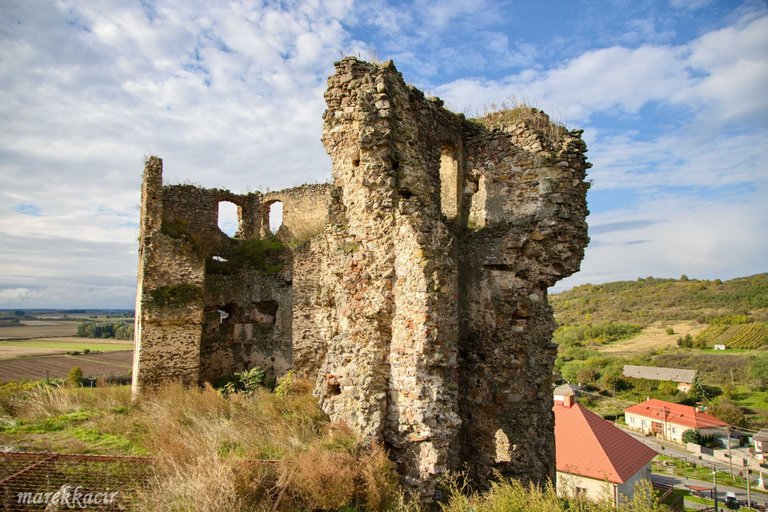
The castle faced its final trial during the Wesselényi uprising, in which Juraj Soós actively participated. This was more of a conspiracy against the absolutist power of the Habsburgs in the 17th century, with little actual fighting taking place. Vienna learned of the conspiracy and sent spies to persuade individual leaders to switch sides. They succeeded, and even Ferenc Nádasdy defected to their side.
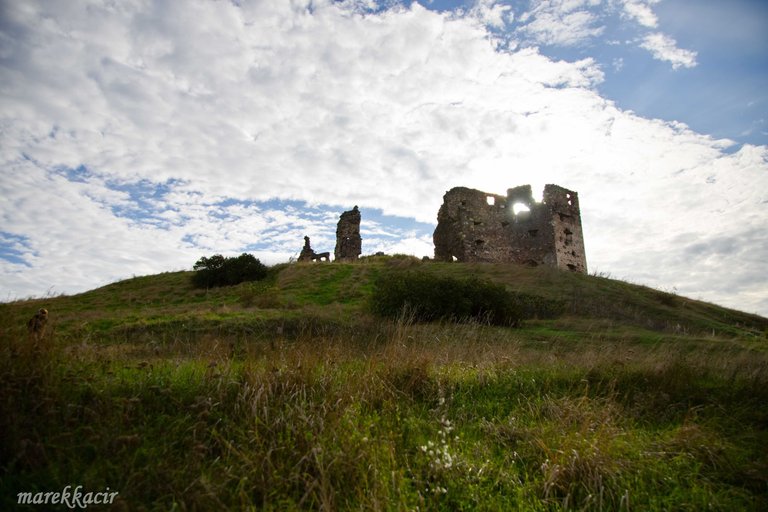
As a result, the castle of Veľký Kamenec was demolished by imperial troops in 1672.
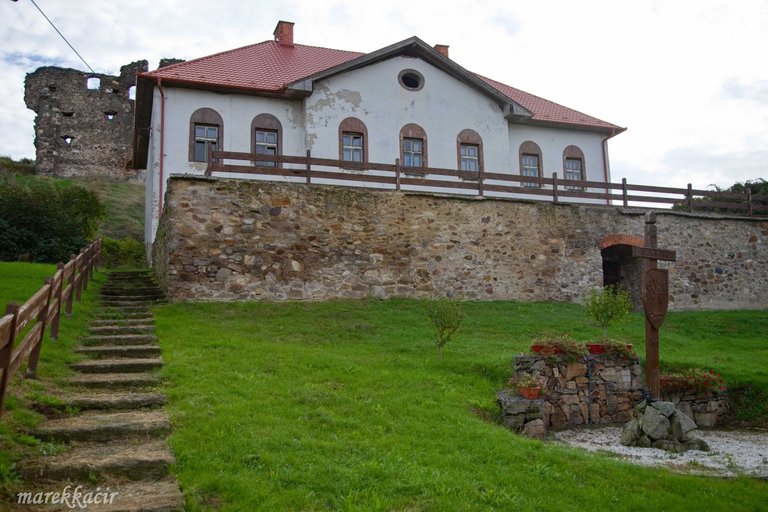
The castle’s building material was later used to construct a manor, which today is in very poor condition.
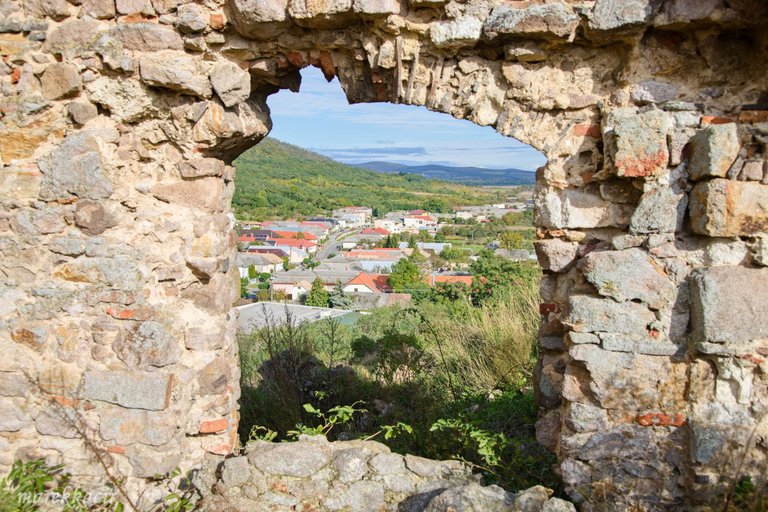
From the castle, there is a beautiful view of the village of Veľký Kamenec, and I am enjoying the experience here despite the fact that little remains of it.
Today, we can see only meager remnants of this once-important place. The castle palace with a large southern tower, a small western bastion, and a larger polygonal northern bastion are all that remain.

This trip took us to a place you might think of as mere ruins without significance. But as I mentioned earlier in this article, it was a place where Hungarian history was written and where two of the most prominent commanders in Central Europe of that era met. We are now getting back into our cars and continuing our journey.
Thank you.
Ahoj
Ruiny starých hradov sú nemými svedkami meniacej sa krajiny. Z výšky sa pozerajú do dolín a sledujú pokrok, ktorý dosiahlo ľudstvo. Dnes sa však vrátime späť v čase. Do čias, kedy na hrade Veľký Kamenec vládol čulý ruch. Keď sa stráže prechádzali po hradbách a každého, kto šiel cez hlavnú bránu poctivo skontrolovali.

Práve hrad Veľký Kamenec bol jedným z našich cieľov na našom výlete po vinárskej oblasti Tokaj. Auto parkujeme pod hradom a po vyšliapanej ceste kráčame miernym kopcom okolo zámku. Hneď za ním sa nachádza pozostatok kedysi významného hradu.

Hrad Veľký Kamenec postavili v 13. storočí po vpáde tatárov na územie dnešného Slovenska. Hradu sa nevyhli ani boje. V roku 1451 ho obsadilo vojsko vojvodcu Jána Jiskru z Brandýsa, ktorého povolala na pomoc kráľovská-vdova Alžbeta. Chcela zachovať uhorskú korunu pre svojho syna Ladislava Pohrobka po smrti Albrechta II. Habsburského. Ján Jiskra so svojimi husitmi podnikal v hradu výpady do blízkeho aj vzdialenejšieho okolia.

O Uhorský trón sa usiloval aj poľský kráľ Vladislav III. Jagelovský. Toho podporoval významný vojvodca Ján Hunyady. Títo dvaja vojvodcovia viedli na území Uhorska boje a hrady im slúžili ako oporné body z ktorých ovládali okolie.

Hrad Veľký Kamenec bol dôležitým strategickým miestom, nakoľko sa nachádzal na obchodnej ceste a bol vstupnou bránou na hornaté severné Uhorsko z nížin na juhu. Práve tu podpísal Ján Jiskra mierovú dohodu s Jánom Hunyadym, čo ukončilo boje medzi nimi.
V roku 1453 bol korunovaný za kráľa Ladislav Pohrobok, no na obsadených hradoch Jánom Jiskrom ostala husitská posádka ešte niekoľko rokov. Rovnako to bolo aj na hrade Veľký Kamenec. Až v roku 1458 hrad obsadilo kráľovské vojsko.

Koncom 15. storočia sa na hrade vykonali veľké opravy. Opravy boli zrejme nutné v dôsledku predchádzajúcich udalostí. Hrad v tomto čase vlastnil rod Soósovcov.

Ďalšou, poslednou skúškou pre hrad bolo Vesselényiho povstanie, ktorého sa aktívne zúčastnil aj Juraj Soós. Jednalo sa skôr o sprisahanie proti absolutistickej moci Habsburgovcov v 17. storočí a k bojom prakticky nedošlo. Viedeň sa o sprisahaní dozvedela a vyslala špiónov, aby presvedčili jednotlivých vodcov sprisahania aby prešli na ich stranu. To sa im aj podarilo a na ich stranu prebehol František Nádasdy.

Hrad Veľký Kamenec tak bol v roku 1672 zbúraný cisárskym vojskom.

Zo stavebného materiálu hradu neskôr postavili zámok. Ten je však v súčasnosti vo veľmi zlom stave.

Z hradu je pekný výhľad na dedinu Veľký Kamenec a ja si to tu užívam napriek tomu, že tu toho veľa neostalo.
V súčasnosti môžeme vidieť už len chabé pozostatky tohto kedysi dôležitého miesta. Môžeme vidieť hradný palác s veľkou južnou vežou, malú západnú baštu a väčšiu polygonálnu severnú baštu.

Dnes to bol výlet na miesto, o ktorom by ste si mysleli, že sú to len múry bezvýznamnej zrúcaniny. No ako som vám spomínal vyššie v článku, bolo to miesto, kde sa písala história Uhorska a miesto, kde sa stretli dvaja najvýznamnejší vojvodcovia v strednej Európe v tomto období. My nasádame do áut a v našom výlete pokračujeme ďalej.
Ďakujem
Cool to see you again !INDEED !LOLZ
You can check out this post and your own profile on the map. Be part of the Worldmappin Community and join our Discord Channel to get in touch with other travelers, ask questions or just be updated on our latest features.
Wow, what a beautiful place, you share very beautiful and entertaining pictures, it's amazing my brother ♥️
Thank you 🙂
Honestly it looks really old, history holds a great story of so many old structures. Thanks for putting in the effort in sharing.
Thank you 🙂
Congratulations @photoparadise! You have completed the following achievement on the Hive blockchain And have been rewarded with New badge(s)
Your next target is to reach 48000 upvotes.
You can view your badges on your board and compare yourself to others in the Ranking
If you no longer want to receive notifications, reply to this comment with the word
STOPAmazing!